A Folding, Fixed Blade: LiquidMetal’s Innovative New Knife
December 14, 2015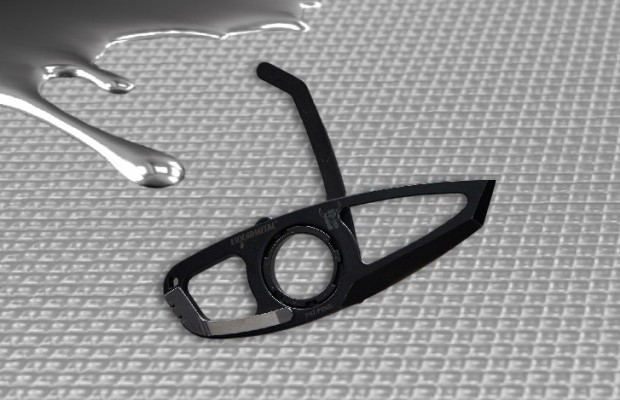
“It’s already pretty sharp out of the mold, but we sharpen it more,” says Matt Martin, Marketing Manager for LiquidMetal Technologies. The company recently began selling a knife on their website called the LiquidMetal knife. Remarkably, the knife is made up of only 2 pieces plus a stainless steel clip and doesn’t require any additional hardware. The main piece is a hollow blade and handle, essentially a fixed blade knife on its own. The second ancillary piece acts as a locking blade guard and when flipped, doubles as an extension of the handle. Both the blade/handle and the guard/extension are made of identical material: LiquidMetal’s alloy, the result of its proprietary manufacturing process. The two pieces fit together using what Martin refers to as a ‘barrel hinge lock’, LiquidMetal’s patent pending mechanism which leaves only a 0.0005″ space between the two parts.

“We’re just a metal parts manufacturer,” says Martin. “This is the only knife we’re probably ever going to sell. We have our own metal forming process and the knife is an example of the capabilities and benefits of that process”. Among other applications, the company also recently produced a component used to make the new Omega watch that 007 wears in the latest James Bond film ‘Spectre’.
The LiquidMetal process is somewhat similar to metal injection molding, a technology Kershaw experimented with in 2005 on a knife called the Offset. The knife was a Ken Onion designed folder with an injection molded blade. But, LiquidMetal Technology’s process is more advanced, and doesn’t require the presence of a binder or a secondary shrinking step. The technology offers the design flexibility of injection molding combined with dimensional tolerances equivalent to precision machining and a metal that is stronger, more flexible, and more resistant to corrosion than conventional steels. The alloy is harder than titanium but 53 Rockwell C is as hard as the material can become for now, according to the company.

The knife project was set in motion when Miltner Adams, a design studio that collaborated with Boker in the past, approached the company with the idea of using the LiquidMetal process to produce a knife. “They came to us and said ‘we want to design a knife with you guys’. The knife is a collaboration between us. They came to us with a 6-7 piece knife and our engineers reduced it to the two pieces it is now,” says Martin. Miltner Adams also distributes the LiquidMetal knife but in a non-anodized version. The technology may catch the eye of knife manufacturers, because fewer parts reduces assembly steps, product defects and the costs of producing each product.
The LiquidMetal knife bears some resemblance to the DPx Gear HIT Cutter released in 2014, which also uses a folding blade guard but requires additional hardware rather than the barrel hinge lock and provides added grip rather than an extended handle when open. At $320, the LiquidMetal knife doesn’t come cheap, but Martin points out it could be offered at lower prices if made in larger production runs. “The bulk of the cost is the tooling,” he says. The company has grown to a staff of 25, the majority of which work in Research & Development.
Knife feature in image: LiquidMetal knife
You may also like...
Featured
Design Minds
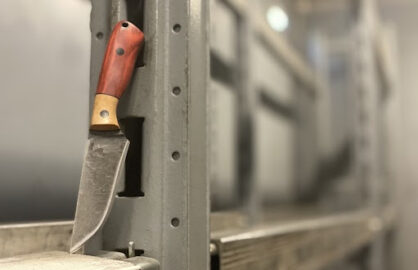
Shop Talk: 7Forge Knives Goes from Science Project to Semi-Production
October 24, 2024In the last five years, the knife making scene has absolutely exploded, with dozens upon dozens of new names, new talents, and new knives. One shop that gained a...

Grant Hawk Passes Away at 82
November 15, 2023Hawk Knives delivered deeply sad news to the knife world yesterday: Grant Hawk, one of the most innovative, boundary-pushing knife makers of the 20th century, passed away earlier this...
Latest News
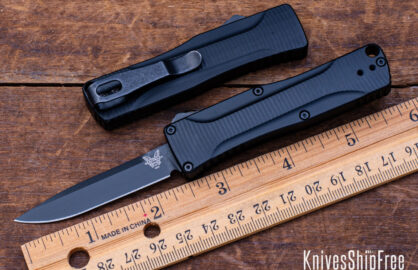
Deals and Double Points All Labor Day Weekend at KnivesShipFree
August 29, 2025Sponsored by: KnivesShipFree August is a big month for knife nerds. Last Sunday, it was National Knife Day, the official day set aside for appreciators of all edged things....

Boker Helps Outdoors Knife Make Leap from Fixed Blade to Folder
August 28, 2025Boker is transmuting one of their outdoors fixed blades into a folding format for the fall. The Micro Tracker Folder adapts the rugged fixie original’s design into a more...
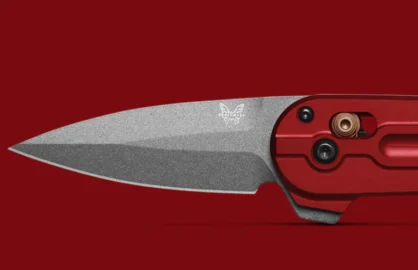
New Benchmade Flipper Releases at Last
August 27, 2025When Benchmade’s 2025 catalog dropped at the beginning of the year, one of the most intriguing entries was for a modern flipper knife that, at the time, did not...
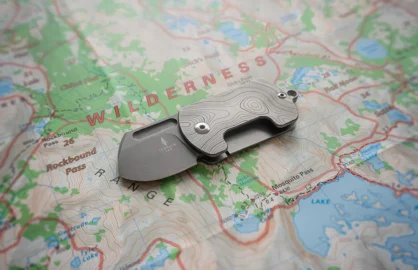
Terrain 365 Thins Down DTK Even Further for New Topo Variant
August 25, 2025Terrain 365 has returned with the second generation of their DTK knife, a superthin dog tag-sized EDC folder. The new DTK-AT Topo has been tweaked to be even thinner...

Tactile Turns Lemons into Liner Locks with New Skeletonized Rockwall
August 22, 2025No one has ever doubted Tactile Knife Co.’s creativity, but they’ve really proved it with the new Skeletonized Rockwall model. This holey roller variation of their flagship flipper stemmed...
Facebook
ABOUT KnifeNews
KnifeNews delivers today's news for knife people like us. We report the latest news on new and popular knives, production knife companies, custom makers, innovations, and cover topics that are of interest to the knife carrying community.
LATEST
-
 August 29, 2025
August 29, 2025
Deals and Double Points All Labor Day Weekend at KnivesShipFree
-
 August 28, 2025
August 28, 2025
Boker Helps Outdoors Knife Make Leap from Fixed Blade to Folder
-
 August 27, 2025
August 27, 2025
-
Tags
featured Knives Benchmade Spyderco Boker Civivi We Knife Co. CRKT Sponsored knife business TOPS Kizer Kershaw Survey Zero Tolerance Kickstarter Work Sharp KnifeCenter.com Nick Shabazz Buck Bestech Knife Gripes Readers' Choice Awards KA-BAR Cold Steel Ostap Hel SOG Design minds Victorinox GiantMouse Gerber Urban EDC Supply New for 2017 KnivesShipFree Interest Jesper Voxnaes Real Steel LionSteel Knife companies Dealers' Choice Awards
©knifenews.com 2022



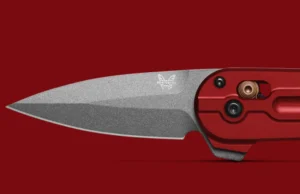
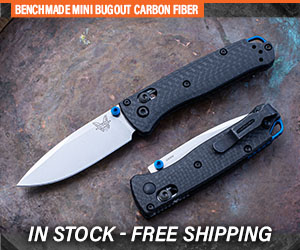
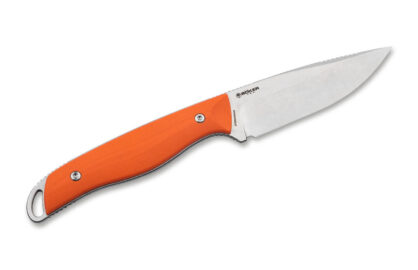




0 comments